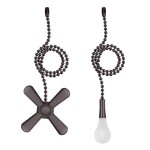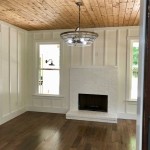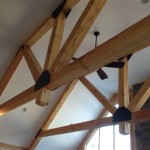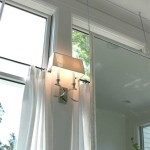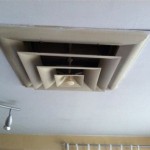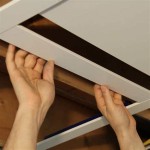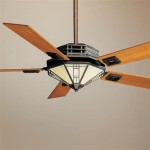How to Make a Ceiling Light Remote Controlled Using Arduino
This article will guide you through the process of converting a traditional ceiling light into a remotely controlled fixture using an Arduino microcontroller. The project offers both a practical application of Arduino technology and a fun way to enhance home automation. By incorporating a remote control, you can conveniently turn the light on and off from a distance, adding a touch of modern convenience to your living space.
1. Gathering the Necessary Components
Before embarking on the project, ensure you have all the essential components readily available. These include:
- Arduino Uno or compatible board: The brains of the operation, responsible for processing commands and controlling the light.
- Relay module: A device that acts as a switch to control the flow of electricity to the light fixture.
- Remote control receiver module: A component that receives signals from the remote control and transmits them to the Arduino.
- Remote control transmitter: A handheld device that sends signals to the receiver module.
- Connecting wires: To establish electrical connections between the components.
- Breadboard: A prototyping tool that aids in assembling the circuit.
- Jumper wires: Used for connecting circuits on the breadboard.
- Ceiling light fixture: The light you wish to control remotely.
- Power supply: To provide power to the Arduino and the relay module.
It is advisable to source components from reputable electronics suppliers to ensure quality and compatibility.
2. Designing and Implementing the Circuit
The next step entails creating a circuit that connects all the components. The circuit diagram outlines the connections between the Arduino, relay module, remote control receiver, and the light fixture. Follow the steps below:
- Connect the relay module to the Arduino: The relay's control pin should be connected to one of the Arduino's digital output pins. This pin will be used to activate the relay.
- Connect the remote control receiver to the Arduino: The receiver module's data pin is connected to one of the Arduino's digital input pins. This pin will receive data from the remote control.
- Connect the relay module to the light fixture: The relay's normally open (NO) contact is connected to the positive wire of the light fixture, while the relay's common contact is connected to the neutral wire. This configuration allows the relay to control the flow of electricity to the light.
- Connect the power supply: The Arduino and the relay module need power to function. Connect the power supply to the Arduino's Vin pin and the relay module's positive terminal. The negative terminals of both components should be connected to ground.
Ensure you have a clear understanding of electrical safety precautions before working with electrical components. It is recommended to disconnect power from the circuit before making any changes or testing the setup.
3. Programming the Arduino
Once the circuit is assembled, you need to write a program for the Arduino to manage communication with the remote control and control the relay. Here's a basic program structure:
- Include libraries: Include the necessary libraries for working with the remote control receiver module and the relay.
- Define pins: Define the digital pins used for the relay control and the remote control data input.
- Initialize components: Initialize the relay and the receiver module.
- Receive remote control signals: Implement a routine to read data from the receiver module.
- Process remote control commands: Decode the received signals to determine the desired action (on or off).
- Control the relay: Based on the decoded command, activate or deactivate the relay to turn the light on or off.
The specific code will depend on the remote control receiver module and the relay module you are using. You can find numerous tutorials and example codes online that provide guidance on programming the Arduino for this task.
Programming the Arduino requires a basic understanding of programming concepts and familiarity with the Arduino programming language. This skill can be acquired through various online resources and tutorials.

Remote Controlled Fiber Optic Ceiling Light With Arduino Open Electronics

Diy Smart Home Project Arduino Based Ceiling Fan Control With Ir Sensor And Remote Arduinoprojects

Arduino Control Leds With A Remote 5 Steps Instructables

Simulate Pushing On Remote Control General Gui Arduino Forum

How To Make Remote Control Fan Regulator Controlled Ac Using Arduino

Control Of Lights Fan Using Wi Fi And Bluetooth Svsembedded 7842358459 9491535690

Diy Smart Home Project Arduino Based Ceiling Fan Control With Ir Sensor And Remote Arduinoprojects

Rgb Accent Lighting With Remote Control Make

Very Nice Diy Remote Controlled Lighting System

Repurposing An Led Rf Remote To Control Anything
Related Posts

